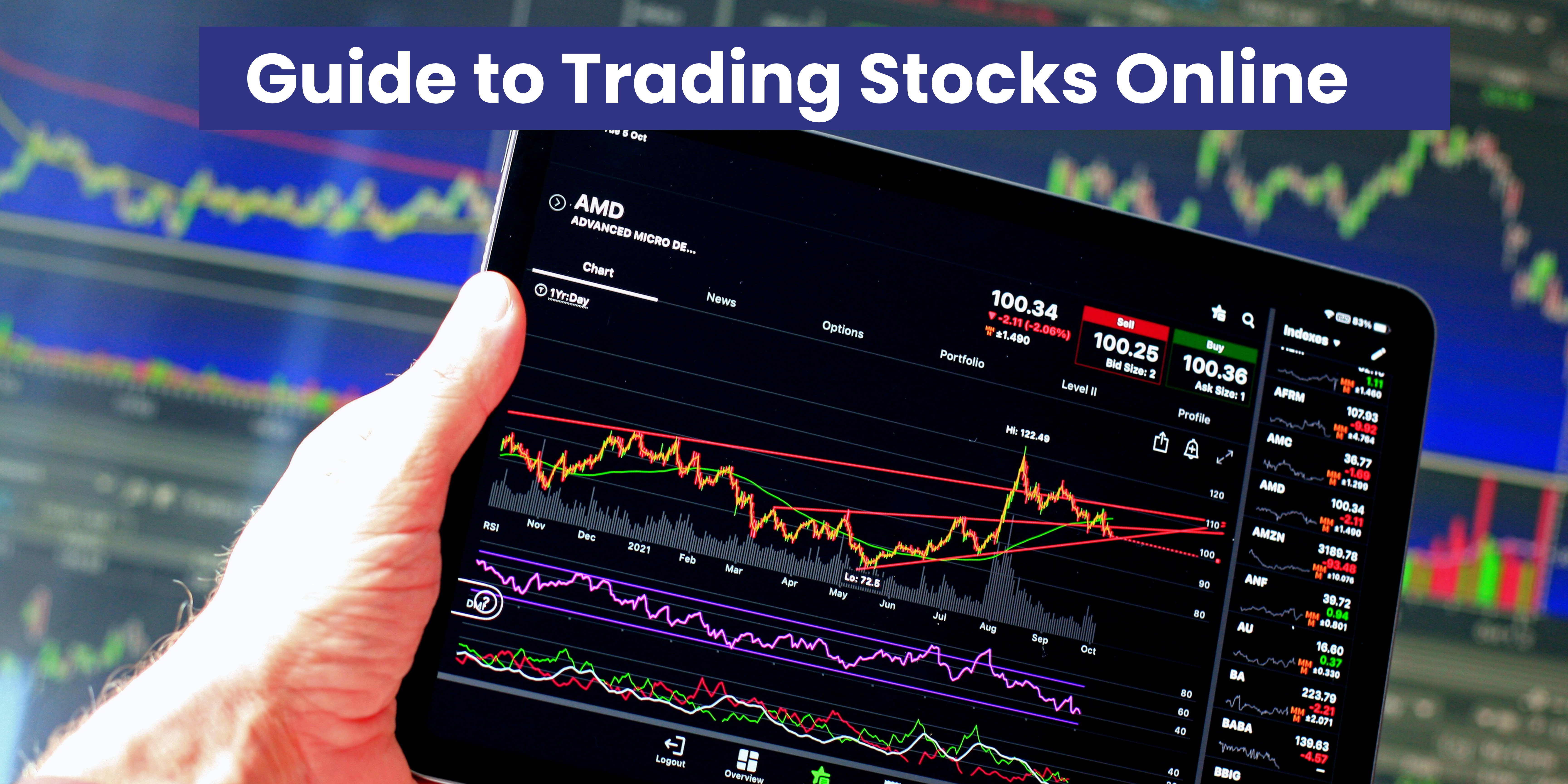Stock trading is the buying and selling of stocks with the objective of making a profit. There are many ways to do this, but the most common way involves buying stocks when their prices are low and selling them when they are high.
Table of Contents
What moves stock prices?
There are several factors that move stock prices, and knowing what they are is the key to being a successful stock trader. However, the general principle is that of supply and demand.
When there is a greater supply of stock than there is demand for them, the stock price will decrease. When the opposite is true, the stock price will increase. The supply and demand of stocks are guided by the following:
The company’s performance
Companies issue stocks and their performance has a lot to do with the price of a stock on the market. Therefore, examining how a company is doing if you are planning on investing in their stocks is crucial.
Some things you can look at are the company’s revenue and its profit or growth. Concrete numbers include the company’s price-to-book ratio, price-to-earnings ratio, growth ratio, and dividend yield. Companies – particularly larger ones – are obliged to share progress reports throughout the year, most likely quarterly. These offer great insight into how the company is doing.
It is also important to evaluate the company’s management team and future trajectory. For example, it may forebode difficult times if the company has switched management teams or experienced a rocky relationship with the industry and shareholders. This can lead to price instability.
The overall health of the economy
Another thing that affects stock prices is the overall health of the economy in which the company is based or originates from. The overall economy affects many things: consumer confidence, interest rates, inflation rates, and investor confidence. So, depending on the sector of the company you want to invest in, it can impact stock prices.
For example, suppose you plan on investing in the middle of a pandemic. In that case, you may have better luck investing in healthcare and telecommunications technology instead of the aviation and travel sectors.
Much of it comes down to common sense, but it is important to realise that the real world has great implications for stock performance.
Trader sentiment
Finally, another big factor that moves stock prices is trader sentiment. Trader sentiment (or market sentiment) is the overall feeling that traders harbour towards the market or a particular stock. Even though it is difficult for one trader to move the market, if hundreds and thousands of traders feel the same way about the market, they will collectively buy and sell, creating big ripples.
Tools and indicators to help you determine market trends
Once you know what moves stock prices, there are ways for you to scope out where the market is heading properly.
Economic reports
Reading economic reports is a sure way to ensure you stay on top of where the market is heading. Whether this is examining market movements or reading company-published annual reports, keep an eye out for numbers such as revenues, net profits, and ratios.
The news
Of course, keeping an eye on the news is another logical way of helping you determine market trends. Is the country going into recession? Are there healthcare crises, and what is the government preoccupied with? These are all important determinants of how the markets will move. You can also keep an eye out for mergers and acquisitions.
Trader sentiment indicators
Finally, some strong markers of trader sentiment allow you to gauge how the wider world feels. One such is the Volatility Index (VIX). The VIX also goes by another name: the fear index. It tracks options prices and measures the implied volatility of markets. The greater the implied volatility, the higher the fear.
Another marker of trader sentiment is the high/low sentiment ratio. It is an indicator that involves the comparison of stocks. For example, it marks the number of stocks heading to their highest level over the past 52 weeks (one year) and the number of stocks plummeting to their lowest level over the past 52 weeks (one year). This is a great way for stock investors to scope out the market and see the general trends.
3 tips for trading stocks online successfully
If you want to maximise your chances of success further when you trade stocks online, below are a few tips you can follow:
Always have a trading plan
The first is always to have a trading plan and never to place a trade that does not go with it.
A trading plan includes your trading objectives, your budget, the instruments you plan on trading, and other factors such as the time of day you will place trades and how you will do so. Having a trading plan is essential because it allows you to set clear boundaries. The plan should also contain concrete and practical terms such as the most you will allow yourself to risk when trading and entry and exit points of trades.
When you have a trading plan, you are less likely to make impulsive decisions based on your emotional state. You will also be more mindful of making trades you have not researched thoroughly. This is great in both the short- and long-term, and it can help you maximise your chances of success.
Do your research
The next point is equally important, and it is to do sufficient research before making investments. Again, this may seem like a no-brainer, but the reality is that many people often get swept up in the excitement of stock trading. As a result, they make decisions in the heat of the moment that can sour their prospects in the long run.
You must know which instruments you will trade, why you will trade them, and how many units you are willing to trade. For example, suppose you decide to invest in Meta stocks. In that case, you should have a clear idea of how the stock is performing in the market and its price history, and you should make decisions based on both your own evaluation of the company and expert predictions.
Learn proper risk management techniques
In the vein of having a trading plan and doing your research, risk management is one important element you cannot neglect.
Risk management in stock trading is the steps you take to minimise losses. They can come from placing stop limits and setting parameters on your trades. They can also take the form of self-discipline – never trading more than you can afford to lose and taking care of your emotions.
Getting started on stock trading
It is simple to get started trading stocks. All you have to do is create an account with a broker or an investment bank. This usually requires you to verify your identity, which you can generally do with a photo ID. You can then choose the instrument of your choice, deposit money into your trading account, and start trading. However, remember that all forms of trading come with risks, and you should never trade more than you can afford to lose.

